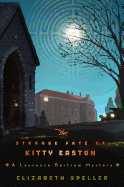
In 1911, five-year-old Kitty Easton disappeared from her bed without a trace. Years later, archeologist and amateur detective Laurence Bartram is invited to the family manor to study the unusual Victorian church on the grounds; there, he finds the Easton family unable to escape the shadow of the girl's disappearance, and the Wiltshire country town unable to forget the many deaths of their beloved soldiers. When a kitchen maid goes missing and a woman's body is discovered in the church, Bartram finds himself drawn into the family secrets, the town's gossip and the forgotten places of the Easton Deadall manor.
At its surface, Elizabeth Speller's The Strange Fate of Kitty Easton is a mystery novel centered on the disappearance of a little girl, but Speller expertly peels back the story's layers to reveal a rich tapestry of English country life in the years following the First World War, bringing forth themes of loss, blame and politics. Her characters reveal the long-lasting impact of the war on civilian and soldier alike, while bringing to life the era's complex relationships between town and manor, upstairs and downstairs, young and old. Speller's descriptions of the manor house itself, and the decorations of the church, are similarly rife with historical detail. The Strange Case of Kitty Easton proves a delightfully layered, intricate novel of kidnapping, murder and architecture--a brilliant reimagining of the classic manor-house mystery of British literature. --Kerry McHugh, blogger at Entomology of a Bookworm

